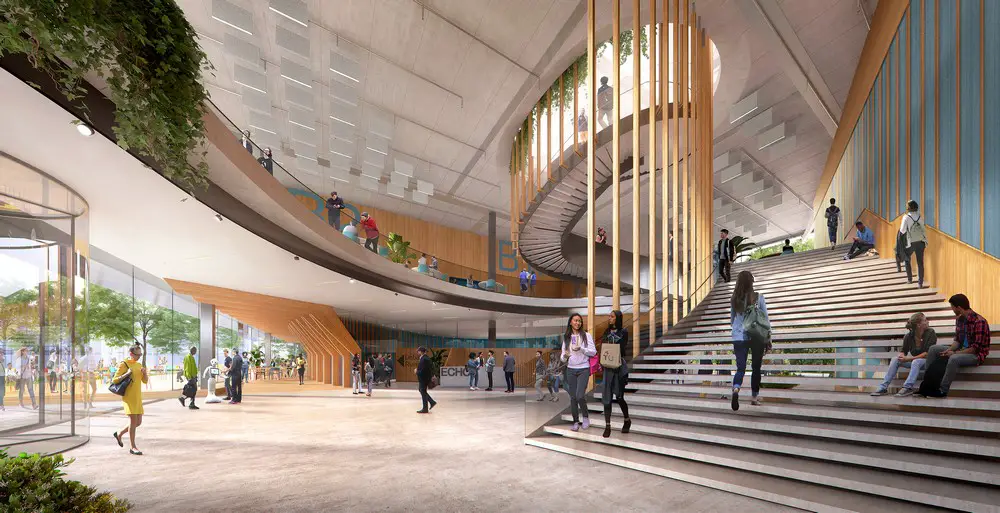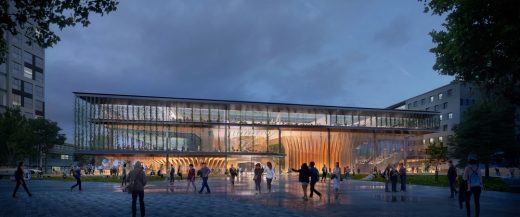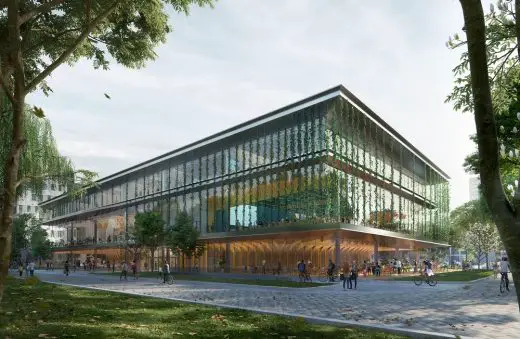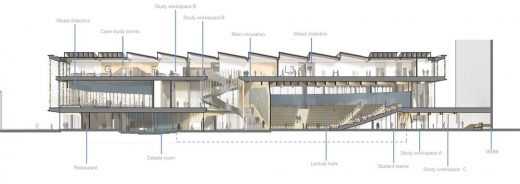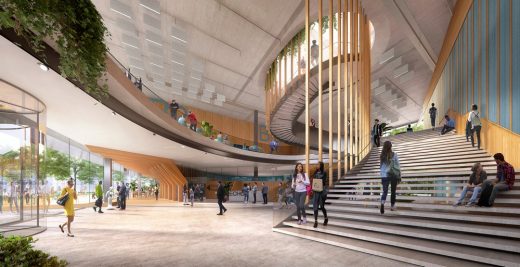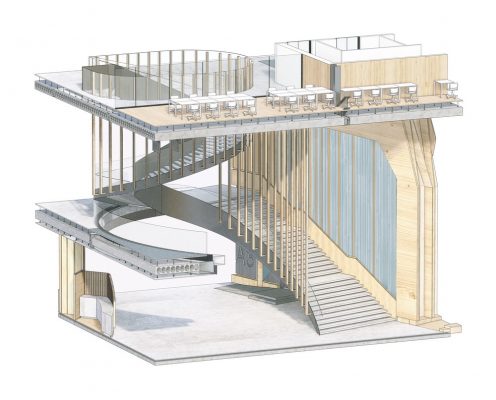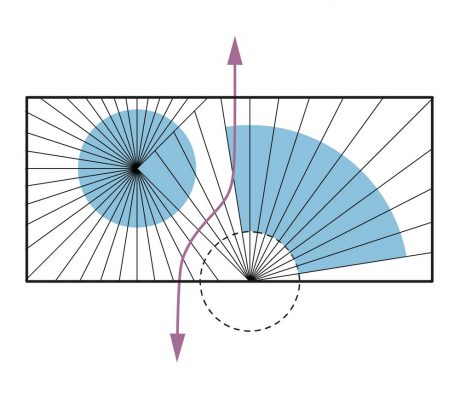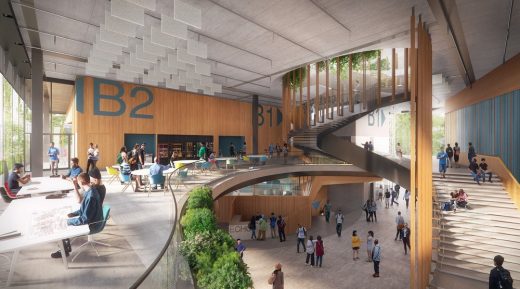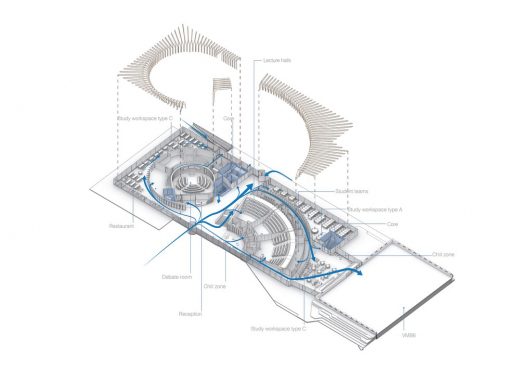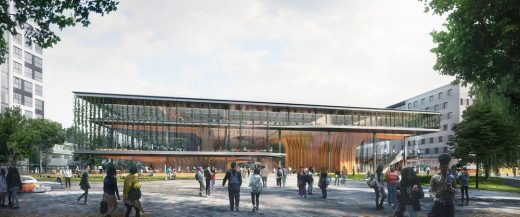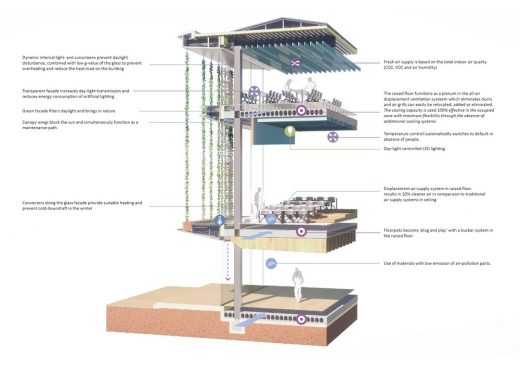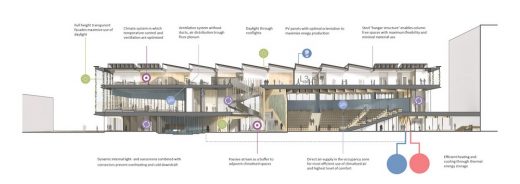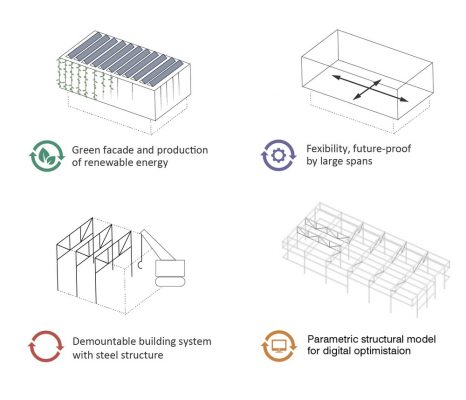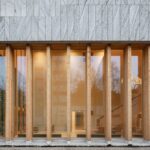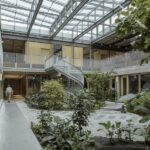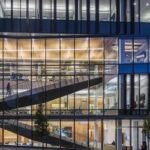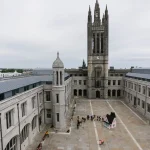Echo TU Delft, Multifunctional Education Building, Dutch University Architecture Images, Architects
Echo TU Delft Building
18 June 2020
Echo Building at TU Delft by UNStudio
Location: Delft, The Netherlands
Architects: UNStudio with Arup and BBN
A future-proof campus: now under construction, Echo, a new multifunctional and flexible education building for TU Delft.
Thursday 18th June 2020 – In light of ever-increasing student numbers and the demand for larger teaching rooms, the new inter-faculty building for TU Delft is designed to meet the leading Dutch university’s need for versatile extra teaching space.
For Echo, UNStudio, in collaboration with Arup and BBN, has created a design that fully supports educational typologies with an energy-generating building in which adaptability and the wellbeing of the user are central.
Ben van Berkel: “The future campus needs to be programmed with a series of agile spaces that invite students and faculty to learn, collaborate and co-create. As student numbers continue to grow, educational buildings need to be extremely flexible: they not only need to operate for shared, interfaculty use, but also need to house a large variety of flexible spaces that cater for various ways of teaching and studying and varying class sizes.”
Teaching rooms
Currently under construction and due for completion in Dec 2021, Echo will house a total of seven teaching rooms, most with a flexible layout. The largest lecture room, which can accommodate 700 people, can be divided into three separate rooms. The more than 300 study spaces can be used for group work and self-study.
The teaching rooms have been designed based on the current and future needs of the lecturers and students. In Echo, the focus will be on medium-sized and large teaching rooms, accommodating between 150 and 700 people. In addition to these larger rooms, there will also be a ‘case-study’ room that will be particularly suitable for motivational teaching/interaction between lecturers and students, in addition to four level rooms for project-based teaching, each accommodating almost 70 people.
Echo will provide space for lectures and tutorials, group work, project-based teaching, debates and self-study. In total, the new building will offer space for around 1,700 students by way of the lecture rooms, classrooms and a variety of study spaces.
A flexible building
Echo is an education building with multifunctional spaces that transcends current learning environments. The design supports the contemporary culture of ‘Everything Anywhere’, where the in-between space is also of great importance. Echo, in addition to excellent study spaces, therefore provides space for unstructured time: a variety of platforms for reflection, inspiration and communication.
The interior offers a warm welcome to visitors. Two auditoria define the space in a lively open square where numerous and varied activities can take place. These auditoria are open where they need to communicate and closed where clear boundaries are required. At specific positions, bamboo ribs extend along the ceiling, forming an integral part of the design.
The crafted look and feel of the bamboo is extended around the central staircase that in one gesture joins the study and cooperation spaces into one connected world of learning, collaboration and connection. This centrally positioned ‘grand stair’ facilitates and promotes physical movement through the building and thus contributes to the health of students, researchers and teachers alike.
A future-proof campus is an active campus. That is why Echo not only connects with the surrounding public space, it also defines it. The adjacent square continues through the transparent ground floor of the building and connects with the street on the other side, turning the ground floor of Echo into a covered public square.
Two sculptural volumes (the large 700 person lecture hall and the debate space), direct the flow of people across this covered square. The diagonal orientation of these volumes simultaneously defines two large transparent corners, one housing a restaurant with terrace opposite the D:Dreamhall, and the other a large study landscape.
The flexible concept of the covered square, coupled with an open and transparent skin, offers the building maximum opportunities to manifest itself as a public connector and make the invisible world of learning a visible and engaging experience.
The exterior of the building is a robust yet sleek structure that opens up the activities taking place inside to the surroundings. The transparent skin further allows light to flow into the interior spaces, providing a healthy and daylight-stimulated environment.
User comfort and energy generation
The design of Echo fulfills the progressive sustainability ambitions of the TU Delft. The continuous glass facades are interrupted horizontally by deep aluminum awnings that play an important role in the composition of the facade and keep out excess solar heat. These canopies are interconnected by cables along which climbing plants can grow to form a subtle green facade that filters daylight.
In order to prevent excess sunlight penetration, a dynamic light barrier is used which provides indoor sun protection. Overheating of the building is prevented by a combination of sun protection and the low solar penetration factor of the glass.
Solar panels, insulation, and heat and cold storage will be used in the new energy-generating building.
Not only has a great deal of attention been paid to the environmental impact of the materials used in the construction, but the building has been designed as much as possible according to principles of circularity. To enable maximum flexibility to the constantly changing world of learning, the goal was set to design a highly user-friendly building.
Using large portal constructions with large grid sizes, the spaces are largely column-free. The steel trusses and hollow-core slabs are connected to dry joints and have standard sizes so that they can be reused elsewhere after the life of the building.
In addition to floors that integrate ventilation and electrical facilities in a flexible and adaptable way, a building is created that not only has the flexibility to be adapted to daily use, but also to different, future programmatic interpretations.
Echo TU Delft by UNStudio – Building Information
Team credits:
UNStudio: Ben van Berkel, Arjan Dingsté with Marianthi Tatari, Jaap-Willem Kleijwegt, Ariane Stracke and Piotr Kluszczynski, Thys Schreij, Mitchel Verkuijlen, Bogdan Chipara, Krishna Duddumpudi, Fabio Negozio, Ryan Henriksen, Shangzi Tu, Xinyu Wang, Marian Mihaescu
Advisors:
Arup: Structural Engineer, MEP and Building Physics
BBN: Building Cost Consultant
Contractor: BAM Bouw en Techniek
Visualisations: Plompmozes
Echo TU Delft Building images / information from UNStudio
Address: Delft, Netherlands
Architecture in The Netherlands
Contemporary Dutch Architecture
Netherlands Architecture Designs – chronological list
Delft Buildings – selection:
Building d(emountable), Nieuwelaan
Architects: cepezed
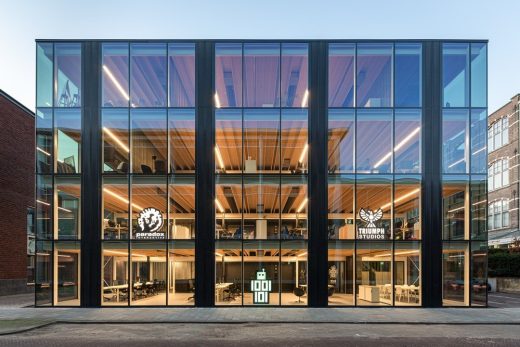
photograph © Lucas van der Wee
Building d(emountable) in Delft
Delft City Hall and Train Station Building, The Netherlands
Architects: Mecanoo architecten
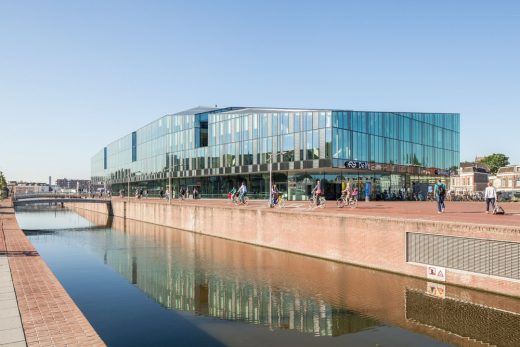
image : Mecanoo architecten
Delft City Hall and Train Station Building
Delfland Water Authority
Design: Mecanoo architecten
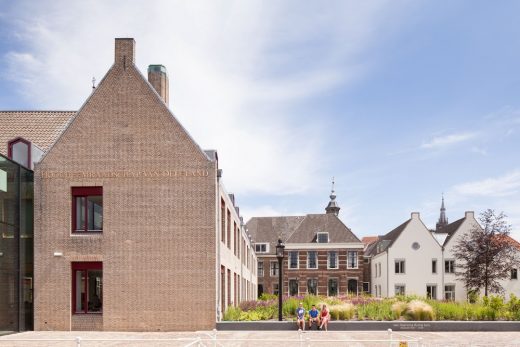
image courtesy of architects
Hoogheemraadschap van Delfland Delft
The Why Factory Research on Nanotechnology in Architecture
Design: MVRDV, Architects
Why Factory Nanotechnology in Architecture
Amsterdam Architecture Walking Tours by e-architect
Dutch Architecture – Selection
UNStudio Tower, Amsterdam
Design: UNStudio, architects
UNStudio Tower
Almere Entertainment Centre
Design: Alsop & Störmer
Almere Entertainment Centre
UNStudio Architects
Comments / photos for this Echo TU Delft Building: UNStudio page welcome

